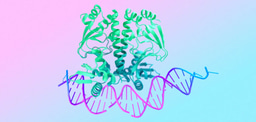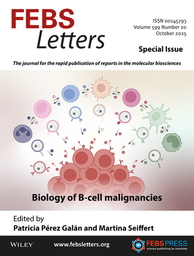COST Action networks and their impact

On 23 November, European Cooperation in Science and Technology (COST) had an important reason to celebrate: it was the 50th birthday of this European funder of networks in research and technology. This jubilee year also marked the transition from the Horizon 2020 Framework Programme to the new Horizon Europe Programme. To mark this double turning-point, COST reflected on its impact through an overarching study, titled the COST Final Impact Assessment (FIA) for Horizon 2020. I will shortly describe COST, the COST Action networks and their underlying logic, before outlining the impact of COST on research in Europe, with a special focus on biochemical topics.
COST is unique in European research funding: it does not fund research itself, but rather the networking associated with research and technology. The main networking instrument funded by COST, COST Actions, connect researchers in Europe and beyond around one topic for a duration of four years. These topics vary from quantum physics to humanities – in fact, many Actions are quite interdisciplinary. The Actions organise meetings, scientific exchanges, training schools and workshops to foster networking among their participants. Nowadays, a typical Action involves around 200 researchers from over 30 countries.
The COST Actions are varied in their nature, their objectives, and the researchers involved. The FIA report acknowledges this diversity by looking closely at the different layers of impact of the COST Actions: impact on the Action participants, scientific impact, and societal impact. Regarding the impact on participants, the assessment notes that the Actions are “small worlds”: through participation in a COST Action, researchers can meet and connect with many peers, often including a diverse range of professional and disciplinary backgrounds. This increases the chance that the participants of the Action will, through their Action participation, cross paths with the right collaborators or find projects to advance their research. In particular, researchers from so-called “widening countries” (those with a relatively modest capacity in research and innovation) can profit from the “marketplace of ideas” which is provided by the COST Actions.
In terms of scientific impact, Actions are noted for generating spin-off publications: on average, the researchers active in a single COST Action co-produce 53 publications which are explicitly recognised as being the result of the COST Action. Among the authors of these publications, the report recognises the presence of young researchers (a quarter of the authors) and researchers from widening countries (30 per cent of the authors). In fact, a co-publication with other COST Action participants is a common result of participation in the COST Action and is also often mentioned by participants in scientific missions and other networking tools as a tangible output of the networking. Beyond publications, COST Actions also create joint proposals for follow-up funding: for example, proposals for Horizon 2020 consortia, for research infrastructures, for MSCA projects, and for widening tools, are regular spin-offs. What is more, these spin-off proposals tend to have a higher success rate (up to 3 times more successful) than “regular” proposals.
The impact of the Actions also extends to European research at-large. It is quite well known that capacity in research and innovation is not uniformly distributed across Europe. Some European countries (the aforementioned “widening countries”) have a somewhat more modest research and innovation capacity. The assessment recognises the COST programme and the COST Actions as among the major instruments to mitigate this European “innovation divide”, by allowing researchers from all backgrounds to join existing networks and by promoting the position of younger researchers and researchers with a widening background within the Actions.
A concrete example of how COST Actions can contribute to the development of research in Europe is Action BM1405 (Non-globular proteins - from sequence to structure, function and application in molecular physiopathology (NGP-NET)), which ran from early 2015 to early 2019. This COST Action brought together researchers from all over Europe, as well as from Argentina and Japan, on the topic of non-globular proteins, which play a salient role in a range of diseases. The COST Action, led by Professor Silvio Tosatto at the University of Padua, resuscitated and curated the DisProt database on intrinsically disordered proteins through a “community curation” method, where over 40 researchers in the network contributed to the curation. This allowed the database to become part of ELIXIR, the European distributed infrastructure for biological data. The COST Action also contributed to a successful spin-off publication on Pfam protein families, which has, at present (December 2021), already been cited over 2000 times.
BM1405 is only one example of the many successful COST Actions which have been deployed over the last years. The bottom-up SESA open call procedure for selecting COST Actions allows for proposals in any topic in science and innovation, including interdisciplinary proposals. This sole focus on excellence, no matter what the disciplinary background is, has led to a most diverse mix of COST Actions, with three quarters of the Actions having a significant interdisciplinary element. Traditionally, a substantial number of Actions have had a strong biochemical component. Recently, the COST Actions CA19105 (Pan-European Network in Lipidomics and EpiLipidomics), CA20110 (RNA communication across kingdoms: new mechanisms and strategies in pathogen control) and CA20113 (A sound proteome for a sound body: targeting proteolysis for proteome remodeling) have started, to give just a few examples.
COST will in the coming years continue working with the COST Actions in achieving maximum impact. Through the thematic COST Connect events, COST helps the Actions to reach out to each other as well as to relevant stakeholders in and outside of academia. The COST Academy allows the Actions, their leadership and their participants to gain skills in a diverse range of topics related to network management, including science communication, outreach to policy makers, and network sustainability. The recent COST Innovators Grant initiative, moreover, allows Actions to gain an additional grant for a year to explore marketable or otherwise innovative applications of their common work. However, the core base of the COST Actions will always be formed by the many thousands of researchers active in the networks, often volunteering extra time to ensure the smooth running of the COST Actions. Their ongoing engagement and enthusiasm remain the ultimate driving force of the Actions and their impact.
The full report of the COST Final Impact Assessment over Horizon 2020 can be found here.
Photo by Ankush Minda on Unsplash





Join the FEBS Network today
Joining the FEBS Network’s molecular life sciences community enables you to access special content on the site, present your profile, 'follow' contributors, 'comment' on and 'like' content, post your own content, and set up a tailored email digest for updates.